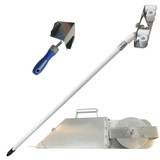Description
Replacement blade for a Bloomington drywall banjo.
Details
Stand: |
No |
Manufacturer: |
Bloomington |







